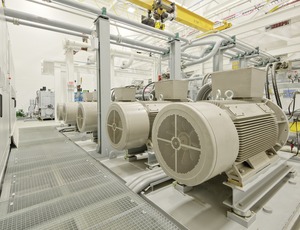
Developed and built primarily as a testing and research center for wind-turbine drivetrains, Clemson University's Energy Innovation Center in North Charleston, S.C., is still ramping up operations. However, it's already producing results, says Nikolaos Rigas, the facility's director. Powered by two massive test beds, with capacities of 7.5 MW and 15 MW, respectively, the center's test equipment uses unique engineering to put wind-turbine drivetrain manufacturers' latest designs through a simulation of 20 years of field conditions in just six months.
General Electric was the first manufacturer to take one of the test beds—the 7.5-MW unit—for a spin. Reports Rigas, "They were very happy with the results."

|
| RIGAS |
"There are other, similar facilities, but the way we've developed this facility, the capacities of these units and our ability to emulate real-world grid conditions on the units make it very unique," Rigas says.
Less than a year into operations, the center is already broadening its reach. Engineers are working to develop what could be the world's first virtual test bed for wind-turbine drivetrains. Such equipment would enable manufacturers to test their digital designs in a virtual environment, as a precursor to bringing in their physical units. "We're almost there," says Rigas.
The center also is starting to study solar energy and the inherent challenges of integrating large amounts of energy into the electrical grid.
At the facility's dedication ceremony last year, U.S. Deputy Secretary of Energy Daniel Poneman noted the importance of sites such as Clemson's.
"The Clemson testing facility represents a critical investment to ensure America leads in this fast- growing global industry, helping to make sure the best, most efficient wind-energy technologies are developed and manufactured in the United States."


Post a comment to this article
Report Abusive Comment